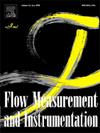Back to basics: On the proper determination of free-surface slope (FSS) in gradually varied open channel flows
IF 2.7
3区 工程技术
Q2 ENGINEERING, MECHANICAL
引用次数: 0
Abstract
This study is a fundamental evaluation of the fluvial wave propagation in river reaches affected by hysteresis, one of the most complex open-channel topics, materialized in loops and lags among hydraulic variables. Hysteresis processes are still understudied as measurements in natural streams for the whole wave propagation duration are hardly available, while the data from existing gaging sites (almost exclusively relying on stage-discharge relationships) can deviate up to 65 % from the actual flows. A better understanding of hysteresis in general and its impact on streamflow monitoring in unsteady flows can be obtained if the free-surface slope (FSS) is determined and analyzed for its variation during wave propagation. Reliable FSS replication in such flows requires a robust understanding of the spatial-temporal sampling constraints. The study addresses the basic, but still weakly resolved, issue of tracing the FSS for waves of different magnitudes and durations. We do so by translating theoretical concepts on oscillatory waves to fluvial counterparts and observing rules for sampling continuous-time signals with discrete-time measurements. The conceptual understanding is verified with numerical simulations and experimental data represented in Eulerian and Lagrangian observation frameworks. We demonstrate that sampling stream stages with spatial and temporal resolutions (expressed in terms of fractions of the wavelength, dxi/λR, and duration, for the flood wave to reach its peak) between approximately and, 0.004 , respectively, are required to properly trace FSS for subsequent usage in experimental or numerical simulation contexts.

回归基础:关于逐渐变化的明渠水流中自由面坡度(FSS)的正确确定
迟滞是明渠工程中最复杂的课题之一,表现为水力变量之间的循环和滞后,本研究是对河段受迟滞影响的河流波传播的基础性评价。滞后过程的研究仍然不够充分,因为在自然溪流中几乎无法获得整个波传播持续时间的测量数据,而来自现有测量站点的数据(几乎完全依赖于阶段-流量关系)可能与实际流量偏差高达65%。如果确定和分析自由面斜率(FSS)在波浪传播过程中的变化,就可以更好地理解非定常流场中的滞后现象及其对水流监测的影响。在这样的流中可靠的FSS复制需要对时空采样约束的强大理解。这项研究解决了一个基本问题,但仍然没有得到很好的解决,即追踪不同震级和持续时间的波的FSS。我们通过将振荡波的理论概念转化为河流对应的概念,并观察用离散时间测量采样连续时间信号的规则来做到这一点。用欧拉和拉格朗日观测框架表示的数值模拟和实验数据验证了概念上的理解。我们证明,采样流阶段的空间和时间分辨率(以波长的分数,dxi/λR和持续时间ΔTi/TR表示,洪水波达到峰值)分别在大约0.0075≤dxi/λR≤0.01和0.004≤ΔTi/TR≤0.06之间,以适当地跟踪FSS,以便在实验或数值模拟中后续使用。
本文章由计算机程序翻译,如有差异,请以英文原文为准。
求助全文
约1分钟内获得全文
求助全文
来源期刊

Flow Measurement and Instrumentation
工程技术-工程:机械
CiteScore
4.30
自引率
13.60%
发文量
123
审稿时长
6 months
期刊介绍:
Flow Measurement and Instrumentation is dedicated to disseminating the latest research results on all aspects of flow measurement, in both closed conduits and open channels. The design of flow measurement systems involves a wide variety of multidisciplinary activities including modelling the flow sensor, the fluid flow and the sensor/fluid interactions through the use of computation techniques; the development of advanced transducer systems and their associated signal processing and the laboratory and field assessment of the overall system under ideal and disturbed conditions.
FMI is the essential forum for critical information exchange, and contributions are particularly encouraged in the following areas of interest:
Modelling: the application of mathematical and computational modelling to the interaction of fluid dynamics with flowmeters, including flowmeter behaviour, improved flowmeter design and installation problems. Application of CAD/CAE techniques to flowmeter modelling are eligible.
Design and development: the detailed design of the flowmeter head and/or signal processing aspects of novel flowmeters. Emphasis is given to papers identifying new sensor configurations, multisensor flow measurement systems, non-intrusive flow metering techniques and the application of microelectronic techniques in smart or intelligent systems.
Calibration techniques: including descriptions of new or existing calibration facilities and techniques, calibration data from different flowmeter types, and calibration intercomparison data from different laboratories.
Installation effect data: dealing with the effects of non-ideal flow conditions on flowmeters. Papers combining a theoretical understanding of flowmeter behaviour with experimental work are particularly welcome.
 求助内容:
求助内容: 应助结果提醒方式:
应助结果提醒方式:


